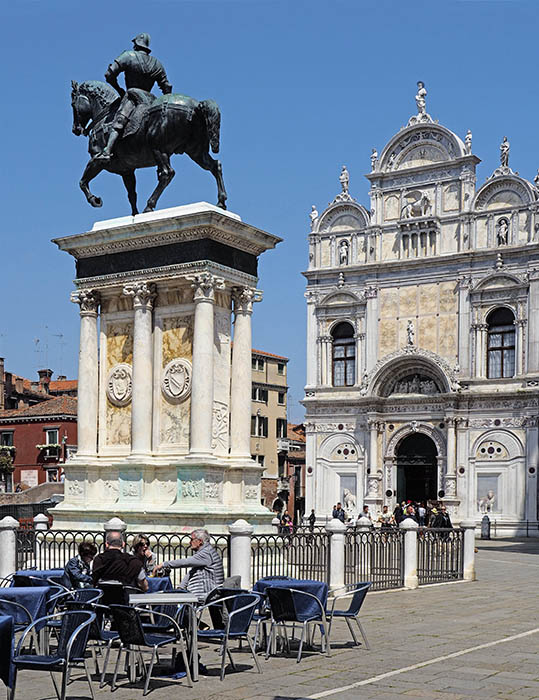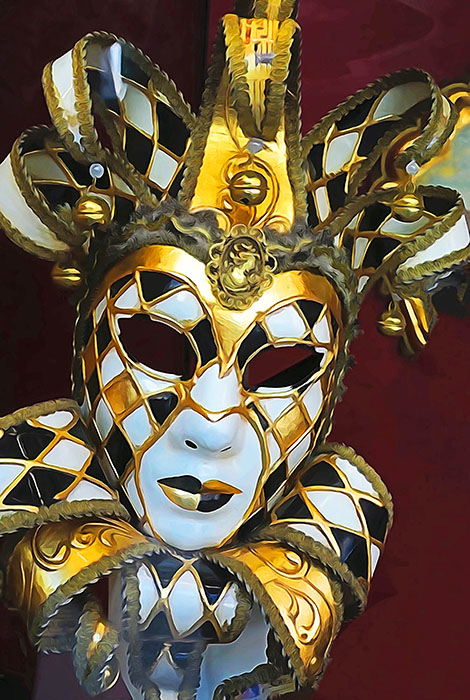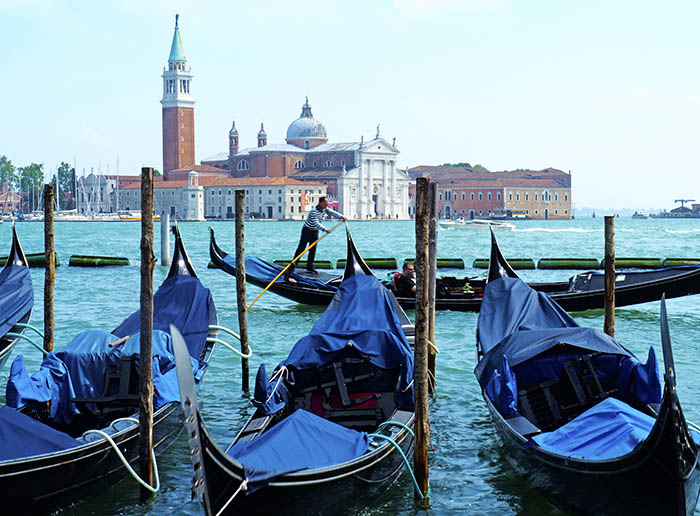
Second in a Series.
Venice’s maze of 3,000 streets, 150 canals and 400 bridges can bewilder the most savvy traveler. Of the city’s millions of annual visitors, it’s fair to say that relatively few venture beyond the main tourist haunts. This is especially true of the many day-trippers, most notably cruise ship passengers, who may have only a few hours to spend in this magical city.
As we noted in our last post, Venice: The Theme Park City?, Venice will be charging an entrance fee and limiting visitor admissions starting in the summer 2022. It’s a strike against overtourism, in which a mass influx of sightseers literally threatens to love a destination to death, or at least makes it a far less enjoyable place to visit or live in.
If it’s your first and only time in Venice, of course you’re going to descend on St. Mark’s Square (Piazza San Marco), framed by splendid palaces and the ornately exotic St. Mark’s Basilica; the Rialto Bridge, which has crossed the Grand Canal in grand style since 1588; the rabbit warren of shopping streets nearby, featuring colorful carnival masks and other souvenirs; and the Galleria dell’ Accademia, which houses Venice’s top art collection.
That is, if you have time after waiting in long lines in San Marco and then negotiating your way through the labyrinthine streets and crowded seafront promenades. Maybe you’ll have time to gulp down a slice of pizza as you go. (Yes, organized cruise ship tours may be able to shorten some waits, but can also restrict your freedom to explore.)

An Alternative to Tourist Overcrowding
But since many cruises use Venice as a departure point for sailing the Adriatic, you can simply arrive several days in advance of your voyage, book an accommodation and discover parts of Venice that most tourists never see.
This is what my wife, Catharine, and I did several years ago, spending a week walking and riding vaporettos (water taxis) through virtually every neighborhood of the city.
In many areas, we spotted almost no other tourists. Instead, we got an intimate look at a more slow-paced everyday life in Venice, as well as discovering artistic treasures and uncrowded cafes and restaurants largely away from the hustle and bustle of the San Marco area.
Nor do you need to be awaiting a cruise to spend a week or more in Venice exploring the lesser-known areas of the city. The key point is that, whatever your circumstance, to keep your “touristic footprint” much lighter than the average visitor. And your experiences will generally be more authentic for it.
Pause to watch schoolboys kicking a soccer ball in a Renaissance-era courtyard. Check out the little markets where Venetians themselves shop. Relax over a morning cappuccino in a quiet campo (square) and eavesdrop on Italian chit-chat — the lyrical language and expressiveness is entertaining even if you have no idea what they’re saying. Step into a bacaro (wine bar) and savor some of the small seafood snacks they offer. To get into the Venetian spirit, and if you’re able, stand at the counter — it’s less expensive than sitting at a table, and the locals will like you for it.

Some Favorite Out-of-the-Way Places
Here are some places I’ve more or less stumbled upon away from the chaos of San Marco. (I won’t attempt to give directions. They say in Venice there is no north or south; I would add no east or west — and never, ever straight ahead.)
The Scuola Grande di San Rocco, a 500-year-old guildhall in the San Polo district, is adorned with 56 remarkable paintings by the 16th-century Venetian master Tintoretto, including his monumental Crucifixion. It’s a stunning display, but far enough off the tourist track that comparatively few visitors ever get there.
The Ghetto, the old Jewish area of Venice that gave the word “ghetto” to the world. Starting from the early16th century, many Jews came to Venice, fleeing persecution in Spain and other lands. Over the centuries, thousands of Jews lived in this district, surrounded by water and held in by gates, guards, and nighttime curfews — which served both to restrict and protect them. Today, the Ghetto is still home to their onetime apartment buildings, five synagogues, the Jewish Museum, some shops, and a few remaining Jewish families.
The Scuola Dalmata dei Santi Giorgio e Trifone, one of Venice’s finest and least known visual feasts. A little 16th-century chapel is lined with some of Italy’s most captivating artworks — with wall panels depicting scenes from the lives of saints George, Jerome, and Trifone — a masterwork of the early Renaissance by Venetian painter Vittore Carpaccio.
Top photo: Basilica Santa Giovanni e Paola (known locally as San Zanipolo) in Venice’s Castello district, away from San Marco. Image by Dennis Cox/WorldViews
Please check out this YouTube video about the prize winning book Cruising the World, From Gondolas to Megaships, by photographer Dennis Cox, with text by yours truly. You can order your copy on sale at PhotoExplorerBooks.com:
Reader Comments:
Great article. I would add that the best strategy from my perspective is to rent a villa for a week with friends and take your time in Venice. The city is at its best in the evenings when the day tourists and cruise ship masses have departed. It is not as expensive as you might think. — Robert E. Waite, robert@waiteandcompany.com, http://www.waiteandcompany.com
Response: All excellent points, Bob. Thanks for the additions!
I’ve spent as much as two months in Venice, nearly bought a house there and return for 10 days or so almost every year. And I can confirm Clark’s assertion. Forget about the main walking route from Santa Lucia rail station past the Rialto Bridge to Piazzale San Marco between 10 am and 6 pm. Apart from the period of Covid-restrictions, it is almost impassible due to the insidious cruise ships — although that could change with the new limitations planned for next year. But any time of day or night, you’ll have the living city to yourself just 100 meters from the barbaric hordes. Many of the most lovely piazze are to be found there, along with picturesque local restaurants and barges selling fruits and vegetables. Despite everything, Venice remains dazzlying beautiful, and a profound testament to the human imagination. La Serenissima. Nothing else quite like her on earth. — Frank Viviano, fviviano@gmail.com
Response: Nicely put, Frank. I agree entirely. It’s remarkable how little you have to stray from San Marco in some cases to find that kind of tranquility. Thanks for offering your expertise as a lover of Venice.
The bacari are actually wine bars, though you can of course get coffee there too. From late morning until they close around 6 or 7, they have displays of little snacks, about two bites worth of deliciousness. You pick out what you want and, as you say, eat them while standing and drinking, unless there is a nearby bridge to sit on, as there often is. This is a good solution for the second meal of the day, for people who have a full Italian meal for the other one. — Marty Farnsworth,
mfarnsworthriche@earthlink.net
Reponse: Thanks for this suggestion, Marty! And I have corrected the post to reflect the fact that a bacaro (singular of bacari) is more wine than coffee bar — and serves the tasty (usually seafood) tidbits that go with a nice local vino.












3 Responses to How Not to Be an Overtourist in Venice